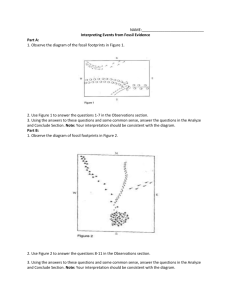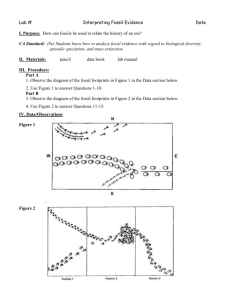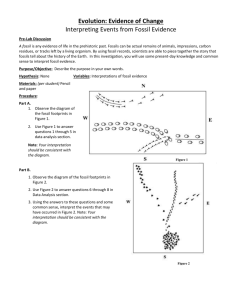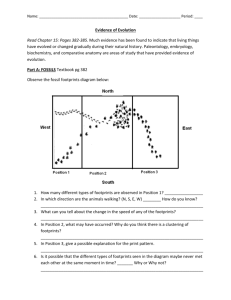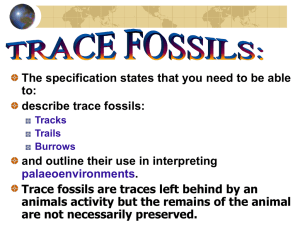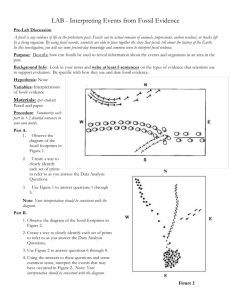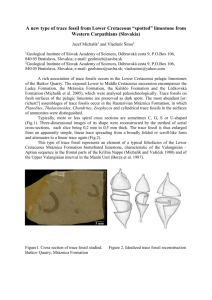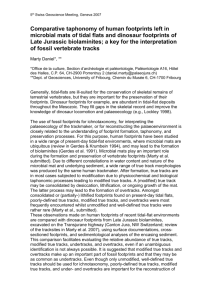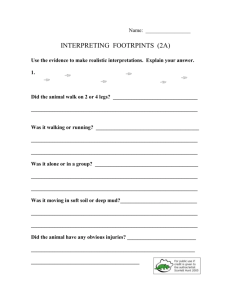Trace Fossils SR
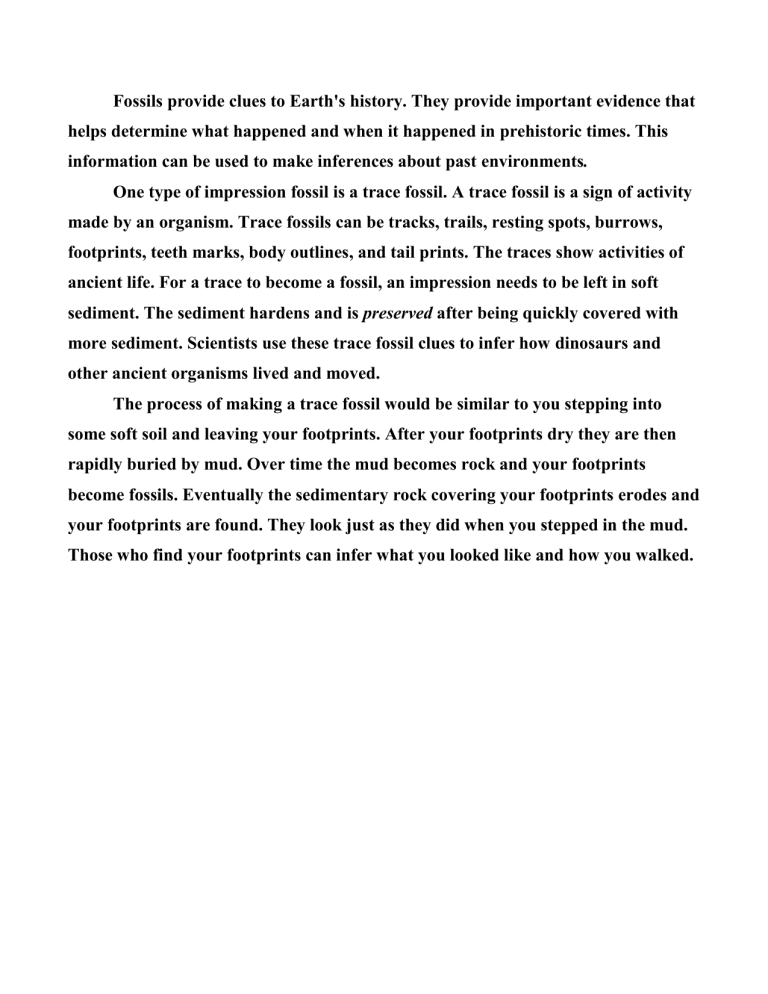
Fossils provide clues to Earth's history. They provide important evidence that helps determine what happened and when it happened in prehistoric times. This information can be used to make inferences about past environments.
One type of impression fossil is a trace fossil. A trace fossil is a sign of activity made by an organism. Trace fossils can be tracks, trails, resting spots, burrows, footprints, teeth marks, body outlines, and tail prints. The traces show activities of ancient life. For a trace to become a fossil, an impression needs to be left in soft sediment. The sediment hardens and is preserved after being quickly covered with more sediment. Scientists use these trace fossil clues to infer how dinosaurs and other ancient organisms lived and moved.
The process of making a trace fossil would be similar to you stepping into some soft soil and leaving your footprints. After your footprints dry they are then rapidly buried by mud. Over time the mud becomes rock and your footprints become fossils. Eventually the sedimentary rock covering your footprints erodes and your footprints are found. They look just as they did when you stepped in the mud.
Those who find your footprints can infer what you looked like and how you walked.
